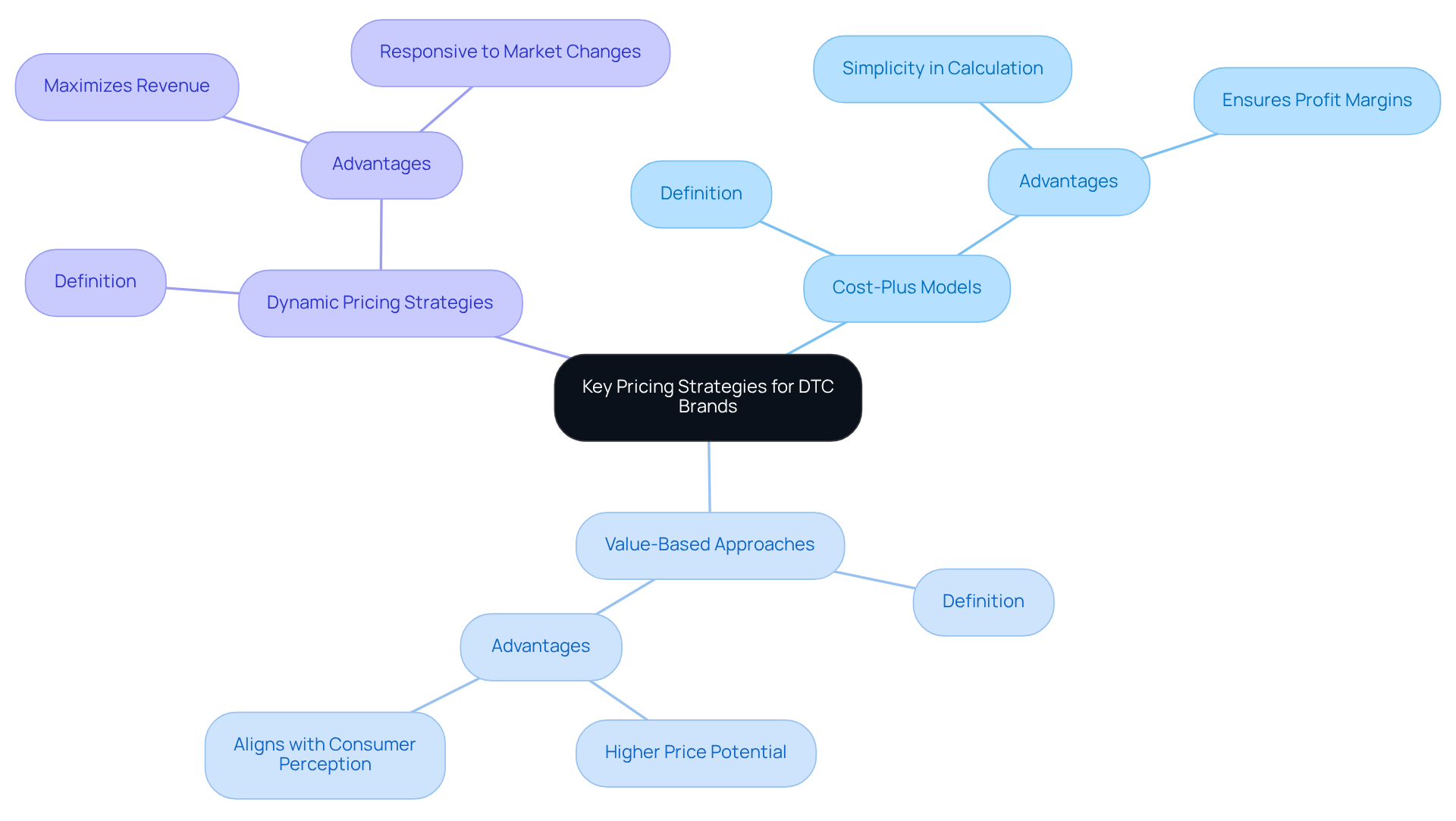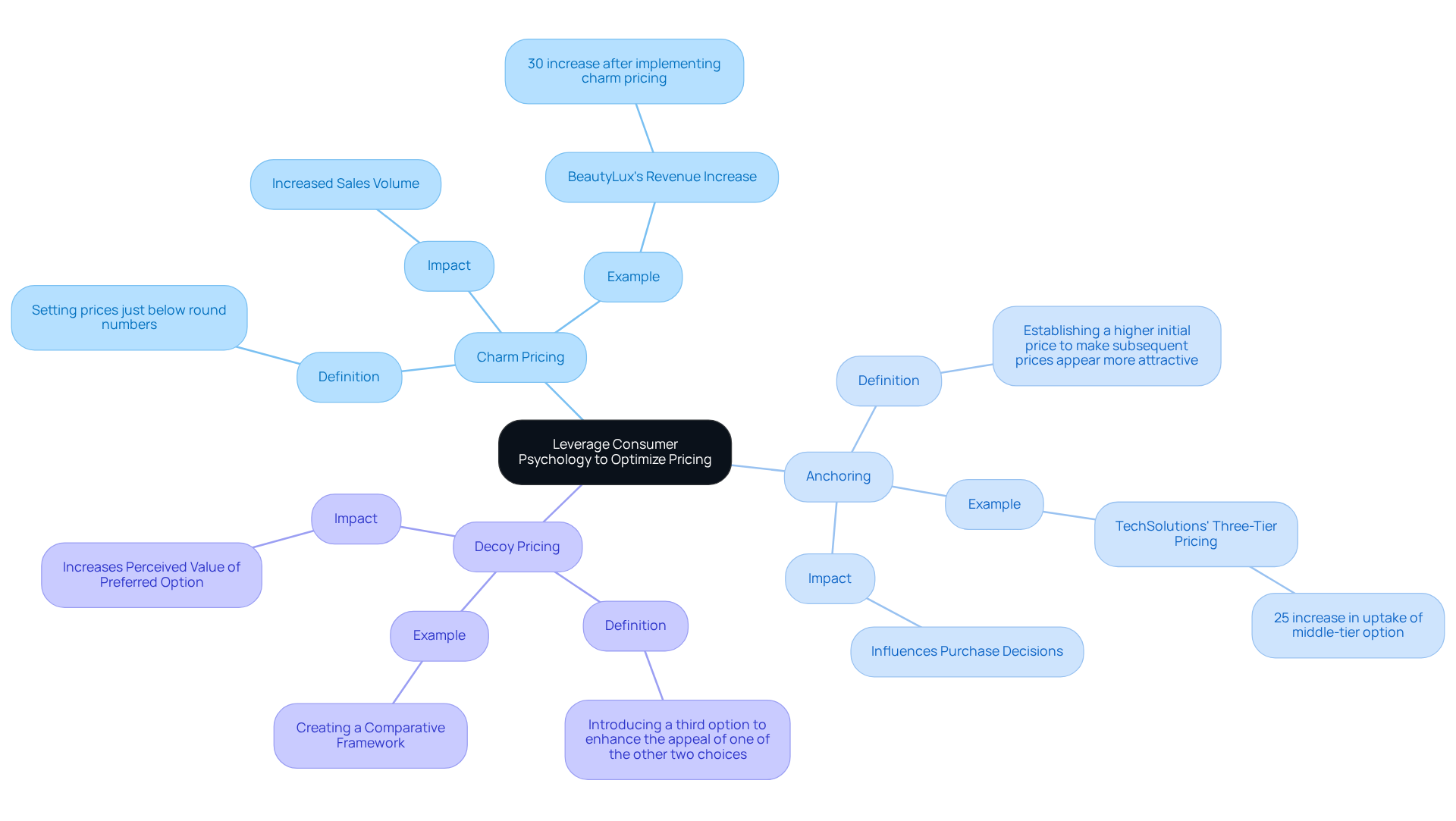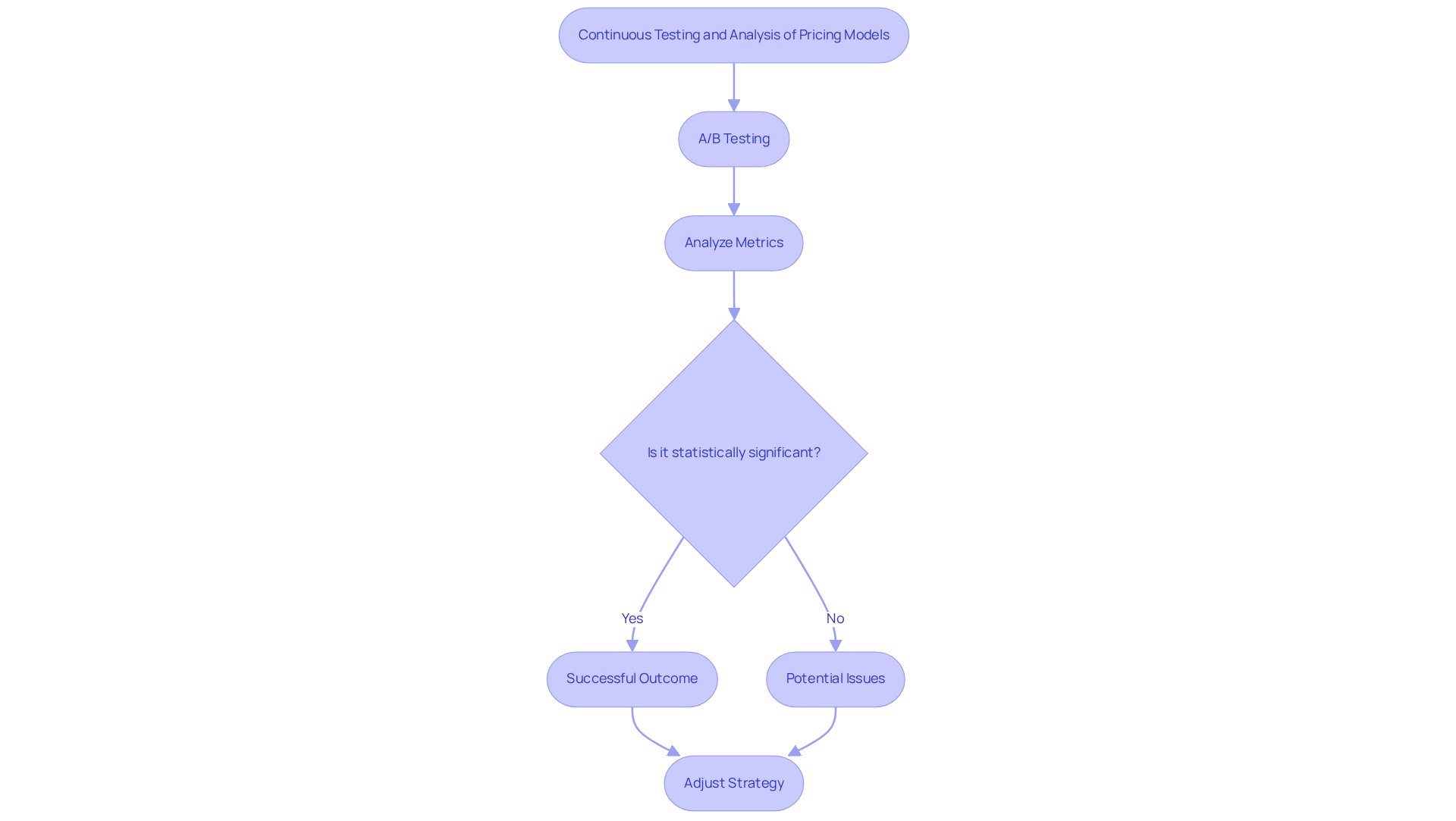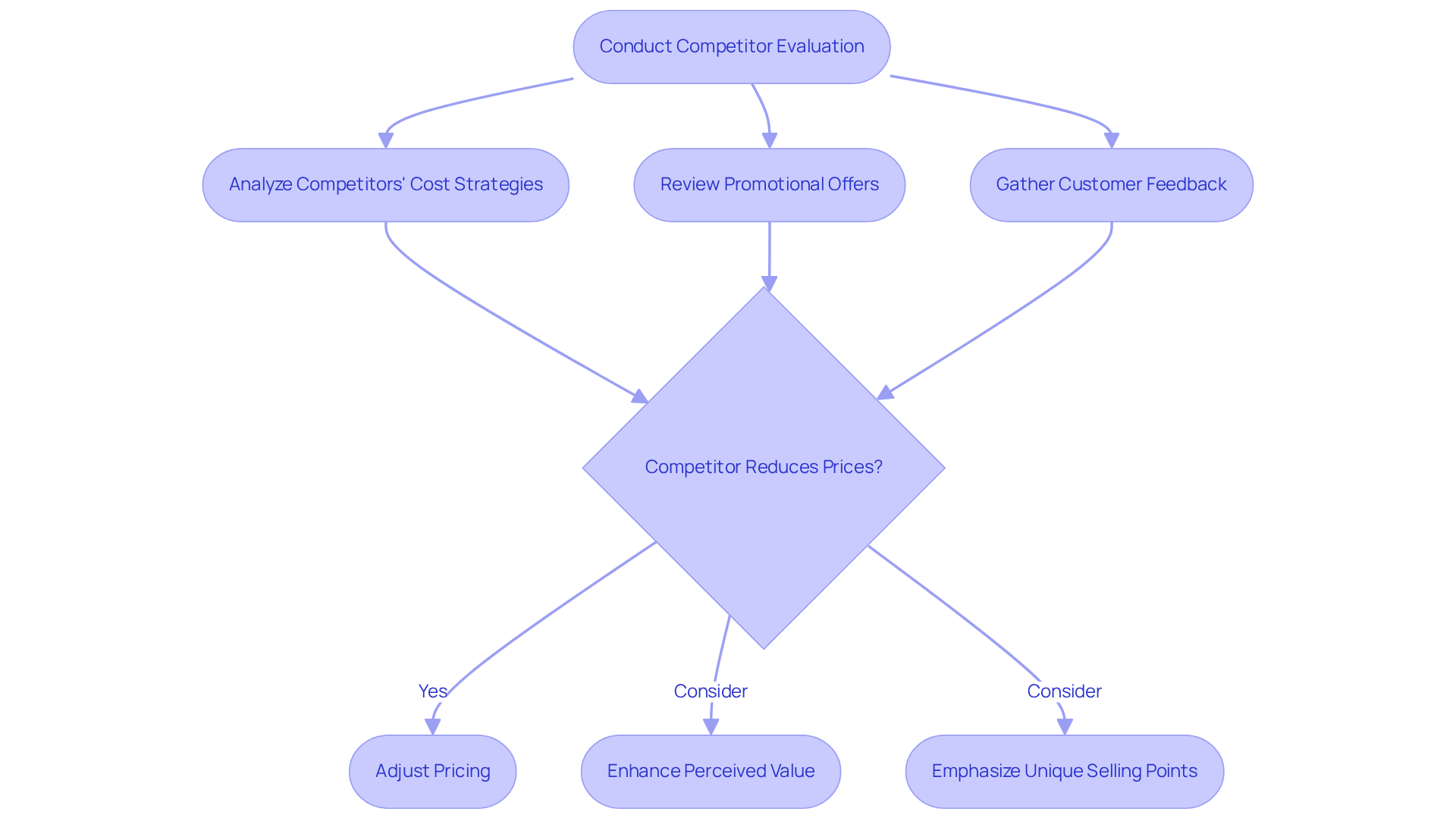
Overview
This article presents four highly effective pricing strategies tailored for direct-to-consumer (DTC) brands:
- Cost-plus models
- Value-based approaches
- Dynamic pricing
- Psychological pricing techniques
Each strategy is supported by compelling examples and robust evidence, illustrating their potential to significantly enhance profitability and foster deeper consumer engagement. It is crucial to align pricing strategies with market dynamics and consumer perceptions, as this alignment not only drives sales but also cultivates brand loyalty.
Introduction
Navigating the competitive landscape of direct-to-consumer (DTC) brands necessitates more than merely offering a great product; it requires a profound understanding of effective pricing strategies. Options such as cost-plus, value-based, and dynamic pricing empower DTC companies to optimize revenue while simultaneously enhancing customer satisfaction. The pivotal challenge, however, lies in selecting the appropriate approach and adapting to consumer psychology, market dynamics, and competitor actions.
How can brands strategically leverage these pricing strategies to not only attract customers but also cultivate long-term loyalty in an ever-evolving marketplace?
Understand Key Pricing Strategies for DTC Brands
have a range of at their disposal, including:
- Cost-plus models
- Value-based approaches
The involves calculating the total production cost and adding a markup to secure profit. In contrast, focus on the perceived value of the product from the consumer's perspective, allowing companies to command higher prices based on the benefits provided. Dynamic pricing, on the other hand, allows firms to implement good pricing by adjusting prices in response to market demand, competitor pricing, and customer behavior, enabling them to maximize revenue during high-demand periods.
Each of these approaches presents and should be carefully selected based on the company's and the dynamics of the market. For instance, a luxury brand may benefit from value-oriented pricing strategies to reinforce its premium image, whereas a mass-market brand might find success with cost-plus pricing to remain competitive.

Leverage Consumer Psychology to Optimize Pricing
can significantly enhance their cost strategies by leveraging , anchoring, and decoy pricing.
- Charm pricing, which involves setting costs just below a round number—like $19.99 instead of $20.00—has been proven to of a better deal. For instance, BeautyLux, a leading cosmetics brand, experienced a remarkable 30% revenue increase after implementing charm pricing across various products. Research consistently shows that products priced in this manner tend to attract more buyers, as consumers often associate these prices with greater value.
- Anchoring plays a crucial role by establishing a , making subsequent prices appear more attractive, thus effectively guiding consumer perception. For example, when a product is initially presented at $100 and later discounted to $79.99, the perceived savings can significantly influence purchase decisions. TechSolutions successfully employed a three-tier fee structure, where the middle option was strategically positioned to appear as the best value, resulting in a 25% increase in uptake of that tier.
- Decoy pricing introduces a third option that of one of the other two choices, thereby increasing the . This strategy can effectively sway consumer decisions by creating a comparative framework that highlights the advantages of the targeted product.
Moreover, serve a vital role in amplifying consumer spending. Studies indicate that individuals participating in such programs spend 12-18% more annually than those who do not. By understanding and applying these psychological concepts, alongside the importance of , DTC companies can establish financial frameworks that resonate with their audience. This ultimately leads to and heightened customer loyalty.

Implement Continuous Testing and Analysis of Pricing Models
must cultivate a culture of continuous testing and analysis to enhance their cost models effectively. This can be achieved through , where various cost strategies are compared to identify the most effective approach. By analyzing essential metrics such as conversion rates, , and consumer feedback, companies can assess the effectiveness of their .
For instance, a company might test a 10% discount against a buy-one-get-one-free promotion to determine which option generates greater sales. Consistently evaluating and modifying cost strategies based on these data insights empowers companies to align with and boost profitability. Notably, companies like Pura have successfully introduced that reflect client value, aiming to enhance revenue by aligning prices with client perceptions and ensuring good pricing.
Furthermore, A/B testing has proven crucial for DTC companies navigating economic uncertainties, as it aids in understanding the on , thus preventing customer alienation. To maximize the advantages of A/B testing, companies should adhere to best practices, such as:
- Testing one variable at a time
- Ensuring statistical significance
- Having a sufficiently large sample size to draw meaningful conclusions
Expert insights, such as Patrick Campbell's emphasis on the importance of , further underscore the necessity for meticulous financial approaches. By treating A/B testing as a continuous practice rather than a one-time project, DTC companies can make informed decisions that drive revenue growth and enhance client satisfaction.

Conduct Competitor Analysis to Inform Pricing Decisions
Conducting a thorough is essential for aiming to assess their costs relative to similar products in the market. This process involves , promotional offers, and customer feedback. Companies can leverage advanced tools and software, such as web scrapers like PromptCloud, to gather . This data empowers them to make informed .
For example, if a competitor reduces their prices, a company must consider whether to adjust their pricing accordingly, , or emphasize unique selling points to justify their pricing.
A report from IAB UK reveals that 97% of the UK's online population recognizes at least one of the top 50 DTC companies, underscoring the competitive landscape. By remaining vigilant to competitor activities, brands can adapt their strategies effectively, ensuring they maintain a and attract price-sensitive customers.
As Katrina Odsinada noted, 'A well-executed not only uncovers what rivals are doing but also offers actionable insights to enhance your retail cost strategy.' This proactive approach not only aids in achieving but also fosters a deeper understanding of market dynamics, ultimately driving profitability.

Conclusion
In the competitive landscape of direct-to-consumer (DTC) brands, effective pricing strategies are paramount for success. By employing a mix of cost-plus, value-based, and dynamic pricing approaches, companies can strategically align their pricing with market demands and consumer perceptions. Understanding these strategies not only maximizes profits but also enables brands to maintain a competitive edge in a saturated market.
Key insights derived from consumer psychology reveal that techniques such as:
- charm pricing
- anchoring
- decoy pricing
can significantly sway purchasing decisions. The importance of continuous testing and analysis is critical, as it empowers brands to adapt their pricing models based on real-time data and consumer feedback. Additionally, competitor analysis enriches this understanding by offering valuable insights into market trends and the pricing strategies employed by rivals.
Ultimately, DTC brands must recognize that pricing transcends mere numbers; it serves as a strategic tool capable of driving consumer behavior and fostering brand loyalty. By consistently refining pricing strategies and remaining attuned to both consumer psychology and competitor actions, brands can enhance their bottom line while cultivating lasting relationships with their customers. Embracing these practices will ensure that DTC brands not only remain resilient but also thrive in an ever-evolving marketplace.
Frequently Asked Questions
What are the main pricing strategies available for DTC brands?
DTC brands have several pricing strategies, including cost-plus models, value-based approaches, and dynamic pricing strategies.
How does the cost-plus pricing strategy work?
The cost-plus pricing strategy involves calculating the total production cost of a product and then adding a markup to ensure profit.
What is the value-based pricing strategy?
The value-based pricing strategy focuses on the perceived value of the product from the consumer's perspective, allowing companies to set higher prices based on the benefits provided.
What is dynamic pricing and how does it function?
Dynamic pricing is a strategy where companies adjust prices in response to market demand, competitor pricing, and customer behavior, enabling them to maximize revenue during periods of high demand.
What are the advantages of each pricing strategy?
Each pricing strategy has distinct advantages; for example, cost-plus pricing can help mass-market brands remain competitive, while value-oriented pricing can reinforce a luxury brand's premium image.
How should a company choose its pricing strategy?
A company should select its pricing strategy based on its strategic objectives and the dynamics of the market it operates in.
FAQs











